Your cart is currently empty!
Few of us will get through life without a backache now and then. But what can you do when back pain takes over your hip, buttocks, and leg? You’ve got sciatica – and Chinese herbs can help.
Sciatica is a specific type of back and leg pain often caused by arthritis in the spine or hip and inflammation of the sciatic nerve. Relying on over-the-counter pain medications will only get you so far in managing sciatic pain, which is why many people are turning to the relieving and restorative powers of Traditional Chinese Medicine.
In this blog, we’ll take a closer look at sciatica and review the best Chinese herbs for natural sciatica pain relief and prevention.
What is Sciatica?
Sciatica is not a disease in itself but a symptom of an underlying issue (such as injury, arthritis, or overuse).
It’s often described as a radiating, shooting pain that travels along the path of the sciatic nerve. The sciatic nerve is the longest nerve in your body, running from your lower back, through your buttocks, and down each leg. When something irritates or compresses this nerve, it can lead to the characteristic one-sided pain associated with sciatica.
Symptoms of Sciatica
The most common symptom of sciatica is leg or hip pain. But let’s take a look at some of the other symptoms you may experience:
- Pain that shoots down your leg, either constant or intermittent
- Numbness, tingling, or “pins and needles” in the leg or foot
- Muscle weakness in the leg or hip, making it challenging to walk or stand
- Lower back pain
Is Your Pain Really Sciatica?
The symptoms of sciatica can be vague. Here’s how to tell if your back, hip, or leg pain is caused by sciatica:
- The “Leg Test”
True sciatica typically affects just one leg. If both legs are acting up, it might be a signal that something else is going on.
- The “Back” Story
Did your leg pain start in your lower back? Sciatica often kicks off in this region and then travels down one leg. If your leg pain is radiating from another area (like the knee or ankle), it may not be sciatica.
- Painful Cough or Sneeze
Oddly enough, true sciatica can worsen when you cough, sneeze, or laugh. That’s because these actions can increase the pressure on the sciatic nerve.
- Saddle Area Problems
Difficulty with bladder or bowel control, or a lack of sensation in the “saddle” region (inner thighs and buttocks) could be a sign of a more serious issue that requires immediate medical attention.
What Causes Sciatica?
Sciatica is a common problem, but not everyone with sciatica develops the condition in the same way. Here are some of the possible culprits:
- Herniated Discs
Imagine your spinal discs as soft cushions that protect your vertebrae. Sometimes, they bulge or herniate, which puts pressure on the sciatic nerve.
- Spinal Stenosis
This condition narrows the spinal canal, which squeezes nerves like the sciatic nerve.
- Piriformis Syndrome
The sciatic nerve runs beneath your piriformis muscle in the buttocks. If this muscle goes into rebellion mode and tightens up, it can squeeze the nerve and cause sciatica.
- Injuries
Accidents happen, and sometimes they result in damage to the spine or nerve compression.
- Age
As we get older, wear and tear on our spine can lead to conditions like arthritis and herniated discs that lead to sciatica.
- Sedentary Lifestyle
Prolonged sitting, especially with poor posture, can increase the pressure on your lower back and spine. Desk jobs, extended hours in front of the TV, or simply a habit of sitting for long periods contribute to this problem. A sedentary lifestyle weakens the muscles that support your spine, potentially leading to structural issues like herniated discs.
- Obesity
Carrying excess weight, particularly around your midsection, can strain your lower back and spine. The added weight increases the load on your spinal discs and can trigger degeneration or herniation.
- Occupation and Lifestyle
Jobs that require heavy lifting, prolonged sitting, or lots of twisting and turning can up your sciatica risk.
The Western Approach: Conventional Treatments for Sciatica
When sciatica strikes, most people turn to conventional Western medical approaches for relief. These treatments are mainly aimed at managing pain and reducing inflammation. Let’s take a closer look at some of the traditional methods used for treating sciatica:
Conventional Treatments for Sciatica
- Pain Medications
Over-the-counter pain relievers like ibuprofen, naproxen, or acetaminophen are often the first line of defense against sciatic pain. For more severe pain, doctors may prescribe stronger medications, including muscle relaxants or opioids. Pain medications do provide rapid relief and make daily activities more manageable. But, they are usually short-term solutions and shouldn’t be used long-term.
- Steroid Injections
Epidural steroid injections may be recommended for those with extreme pain. With a steroid injection, anti-inflammatory medications go directly into the area around the affected nerve to reduce inflammation and relieve pain. Like pain medications, steroid injections can provide temporary relief but are not a long-term solution.
- Physical Therapy
Physical therapy exercises and techniques can help you improve posture, flexibility, and strength while managing sciatica. They focus on correcting musculoskeletal imbalances and promoting healing.
- Surgery
If all else fails, and your quality of life is significantly compromised, your doctor may recommend surgery. While surgery is the right choice in some cases, it’s important to remember that operations are an invasive option with potential risks (including infection, nerve damage, and recovery complications).
While conventional treatments have their place in managing the condition, some individuals seek alternative approaches, like Chinese herbs for sciatica, which offer a different approach to treating the root causes of sciatica and promoting whole-body health.
The Eastern Approach: TCM Treatments for Sciatica
Traditional Chinese Medicine (TCM) is an ancient and holistic approach to health that has helped people manage pain conditions like sciatica for thousands of years.
In TCM, sciatica is understood to be the result of stagnation of qi and blood in the meridians, or energy pathways, that connect the lower back, hips, buttocks, and legs. This stagnation can occur due to various factors, including external pathogens, physical injury, or lifestyle choices.
The TCM Patterns of Sciatica
Treating sciatica with TCM is all about individualization and addressing the root causes. This starts with identifying the key pattern of imbalance that led to the development of sciatic pain. Here are a few of the most common underlying patterns of sciatica in TCM:
- Qi Stagnation
Qi stagnation is one of the most common causes of any pain in TCM. When qi stops flowing (due to blockage or a lack of qi), the tissues don’t get the fluids, nutrients, and blood flow they need to function well and pain ensues. This commonly occurs in the back and leg due to inactivity or stress.
- Blood Stasis
Blood stasis is a more severe condition than qi stagnation and typically results in a deep, achy pain. It can be due to injury or poor circulation and sometimes involves inflammation.
- Cold-Damp Invasion
Pain that worsens in cold and damp conditions is often caused by a cold-damp condition. If your sciatica started after exposure to cold, damp weather or environments this may be your root cause.
- Kidney Deficiency
Sciatica caused by Kidney deficiency is often chronic and is related to issues like aging and overwork. There are typically other signs of Kidney deficiency, such as low back pain or weakness, knee pain or weakness, urinary difficulty, fatigue, hair thinning or hair loss, or hearing loss.
The Science Behind Chinese Herbs for Sciatica
Chinese herbs have a rich history in Traditional Chinese Medicine, and modern research is shedding light on their potential benefits for pain relief, inflammation reduction, and other benefits that can help with managing sciatica. Here are some key findings from recent research studies:
- Chinese herbs help relieve pain.
Many Chinese herbs have analgesic properties, meaning they help alleviate the pain associated with sciatica. Some herbs work internally by soothing discomfort and restoring balance, while others can be used topically for quick relief.
- Chinese herbs have anti-inflammatory effects.
Anti-arthritic herbs such as Eucommia Bark and turmeric have anti-inflammatory properties, which can help reduce the swelling and inflammation often associated with sciatica.
- Chinese herbs reduce the risk of developing arthritis.
Chinese herbs for sciatica may also help reduce the risk of developing arthritis in the affected area. When left untreated, sciatica can cause excess wear and tear on the joints and tissues in the lower back, hip, and leg and lead to arthritis. Chinese herbal formulas possess anti-inflammatory properties that can reduce the chronic inflammation often associated with sciatica and help prevent further joint conditions.
While further research is underway, these findings suggest that Chinese herbs have the potential to complement or even replace conventional treatments for sciatica (and their side effects).
The Best Chinese Herbs for Sciatica
Aggravating leg pain and discomfort can send you looking for relief – fast. Thankfully, you have options. While conventional treatments are available as a last resort, Chinese herbal medicine offers a safe and natural way to get relief and heal your sciatica from the root.
But, there is no one-size-fits-all Chinese herb for sciatica. Let’s explore the world of Chinese herbs and herbal formulas specifically tailored to address the different pattern types of sciatic pain.
Chinese Herbs for Sciatica
Zuo Gu Shen Jing Tong or Sciatica Compound Liquid Tincture
Zuo Gu Shen Jing Tang is one of the go-to formulas for sciatic pain (which is why it’s also known as “Sciatica Nerve Compound”). This specialized blend serves to unblock the channels, alleviating the stagnation that often leads to sciatic nerve pain, as well as other forms of joint, tendon, and muscle discomfort. Choose this formula if your sciatica presents with heat, swelling, or inflammation. If your sciatica feels better with heat, consider Du Huo Ji Sheng Wan (below) instead.
For severe, deep, fixed sciatic pain, Xiao Huo Luo Dan can help. This formula incorporates a blend of herbs that are known for their ability to invigorate qi, promote circulation, and alleviate discomfort. By addressing the underlying issue of qi stagnation and weak qi, Xiao Huo Luo Dan helps relieve pain and restore proper circulation.
Chinese Herbs for Sciatica with Kidney Deficiency
Yao Tong Pian is a powerfully tonifying formula for those with chronic Kidney deficiency-type sciatica. This deficiency represents a decline in the active, warming, and moving aspect of the Kidney system, which governs the lower back. You may benefit from this formula if you experience weakness in the lower back and knees, low energy, frequent nighttime urination, and swelling.
Chinese Herbs for Sciatica with Cold-Damp
Du Huo Ji Sheng Wan or Solitary Hermit Tincture
If your sciatica acts up in cold, wet climates, or is worse in winter, this formula may be the one for you. Du Huo Ji Sheng Wan (aka Solitary Hermit) contains warming and dampness-dispelling herbs like Du Huo and Sang Ji Sheng, which help alleviate pain and improve circulation.
Topical Pain Relief for Sciatica
-
 Hua Tuo Extra Strength – Pain Patch (Medicated Plaster)
Starting at $5.99
Add to CartSelect options
This product has multiple variants. The options may be chosen on the product page
Hua Tuo Extra Strength – Pain Patch (Medicated Plaster)
Starting at $5.99
Add to CartSelect options
This product has multiple variants. The options may be chosen on the product page
Topical Chinese pain patches are an easy way to keep pain levels low while staying active. Hua Tuo plasters are made with herbs that have natural analgesic properties. When applied to the back, hip, or leg, they can alleviate sciatic pain and soothe the nervous system. These patches also have anti-inflammatory effects, which can reduce swelling and inflammation.
Zheng Gu Shui is a powerful liquid tincture for all kinds of joint and nerve pain, including sciatic pain. Apply this liniment to the affected area to reduce inflammation, alleviate pain, promote circulation, and relax the sciatic nerve.
Mobility Muscle & Joint Rub can offer quick relief for sciatic pain, or help prevent a sciatica flare during exercise or other activities. Apply a small amount to the affected area, massage gently, consider using a warm compress, and repeat 2-3 times daily as needed.
Lifestyle Tips to Reduce Sciatica Symptoms
Once you’ve found your Chinese herbal formula fit for your sciatica type, it’s time to enhance your results with simple lifestyle changes. Lifestyle plays a crucial role in how quickly your sciatic pain heals – and how likely it is to stay gone. Here are some simple habits that go a long way to keep pain levels low and support your body’s healing process:
- Stay active with gentle exercise.
Engaging in low-impact exercises like swimming, walking, or yoga can help improve the strength and flexibility of the muscles surrounding the sciatic nerve. A strong, supple body is better equipped to support your spine and alleviate pressure on the nerve over time. - Check your posture.
Be mindful of your posture, especially if you have a desk job or spend extended hours sitting. Invest in an ergonomic chair or make adjustments to your workspace to ensure good posture and prevent sciatica flares. - Get your weight under control.
Maintaining a healthy weight is essential, as excess pounds can place added stress on the spine and exacerbate sciatic pain. A balanced diet, regular physical activity, and Chinese herbs for weight loss can help you improve your fitness and overall well-being. - Enhance relief with hot or cold therapy.
Applying heat or cold packs to the leg in pain can help alleviate pain and reduce inflammation. Cold packs are generally more effective during the acute phase (within the first two days), while heat therapy is better for chronic pain or ongoing muscle tension. Pair your heat or cold therapy with a pain-relieving liniment or balm to get even better relief. - Make time for stress relief.
Stress can ramp up all kinds of health issues, including muscle tension and sciatica. Work 10-30 minutes of mindfulness meditation, deep breathing, or stretching into your daily routine to help reduce stress and alleviate sciatic pain.
Stop Sciatica from the Root with Chinese Herbs
Sciatica pain can stop you in your tracks. But with the help of Chinese herbs for sciatica, you can get relief by addressing not just your symptoms, but the underlying root causes of your unique pain. Ready to feel better and get moving again? Shop our full collection of Chinese herbs for back pain and sciatica relief today.
Share This
Table of Contents
- What is Sciatica?
- The Western Approach: Conventional Treatments for Sciatica
- The Eastern Approach: TCM Treatments for Sciatica
- The Science Behind Chinese Herbs for Sciatica
- The Best Chinese Herbs for Sciatica
- Lifestyle Tips to Reduce Sciatica Symptoms
- Stop Sciatica from the Root with Chinese Herbs
About the Author
Blog Categories
- Adaptogen Articles (8)
- Brain Health Articles (9)
- Chinese Medicine Basics Articles (13)
- Chinese Medicine for Pain Articles (15)
- Chinese Medicine for Pets Articles (3)
- Chinese Medicine for Skin Conditions Articles (6)
- Chinese Medicine Formula Articles (6)
- Chinese Medicine Sleep Articles (4)
- Conditions & Concerns Articles (24)
- Digestive Issues (5)
- Eating for the Seasons (2)
- Health & Lifestyle Articles (17)
- Heart Health Articles (4)
- In the News (1)
- Medicinal Mushrooms Articles (7)
- Men's Health Articles (8)
- Scholarships (5)
- Uncategorized Articles (9)
- Weight Loss, Diet & Obesity Articles (5)
- Women's Health Articles (10)
Articles Related To Best Chinese Herbs for Sciatica
-
We’ve all had a headache before. While some are mercifully mild and short-lived, others can completely debilitate you for hours or even days. For most of us, headaches are just an occasional inconvenience. But for the over 39 million Americans who suffer from more severe migraines, they can be a major struggle that interferes with…
-
Whether it’s a nagging muscle ache, a fresh bruise, or persistent joint pain, these everyday aches can make even the simplest tasks feel like a mountain of a challenge. But before you reach for the OTC pain killers, your best solution may lie in an ancient natural concoction: Dit Da Jow. For centuries, people have…
-
When stubborn pain keeps you from doing what you love, a Chinese pain patch may be just what you need to get moving again. While herbal teas and pills are the most recognizable form of Chinese herbal medicine, there are many topical applications of herbal medicine as well. Topical herbal medicine (in the form of…
-
Joint pain can be a huge burden, especially as we age. One of the most common issues people face as they approach their 50s is what some TCM practitioners call “fifty-year-old-shoulder.” Also known as frozen shoulder or impingement syndrome, this shoulder pain can be extremely aggravating and keep you from doing the tasks and activities…
-
Summertime is here – and it’s the prime season for outdoor activities. Whether you’re exercising outside, playing sports, or just enjoying some time in the sun with friends and family, enjoying the summer and staying active also helps you maintain your best health. But, all that extra exercise can come at a cost. Increased activity…


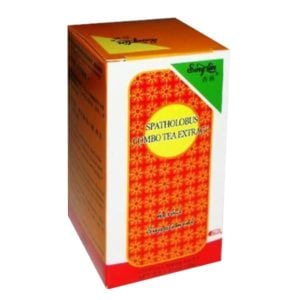 Zuo Gu Shen Jing Tong – Sciatica Relief – Sciatic Nerve Pain Treatment
Zuo Gu Shen Jing Tong – Sciatica Relief – Sciatic Nerve Pain Treatment
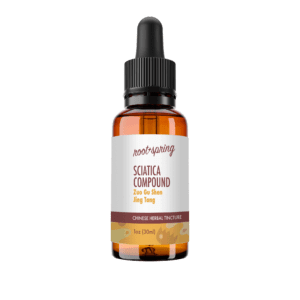 Zuo Gu Shen Jing Tang (Sciatica Compound) – Liquid Extract (Tincture)
Zuo Gu Shen Jing Tang (Sciatica Compound) – Liquid Extract (Tincture)
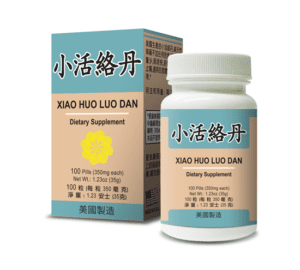 Xiao Huo Luo Dan (Healthy Joint Combo) – by Lao Wei
Xiao Huo Luo Dan (Healthy Joint Combo) – by Lao Wei
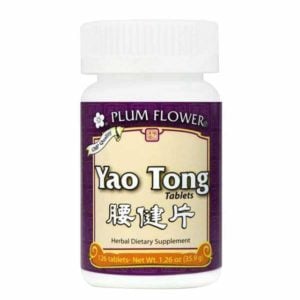 Plum Flower – Yao Tong Pian
Plum Flower – Yao Tong Pian
 Du Huo Ji Sheng Tang (Solitary Hermit) – Liquid Extract (Tincture)
Du Huo Ji Sheng Tang (Solitary Hermit) – Liquid Extract (Tincture)
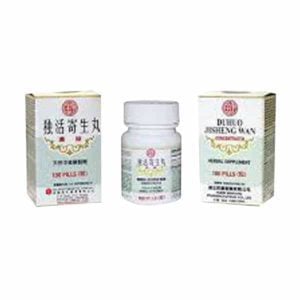 Duhuo Jisheng Wan – Solitary Hermit – Min Kang Brand
Duhuo Jisheng Wan – Solitary Hermit – Min Kang Brand
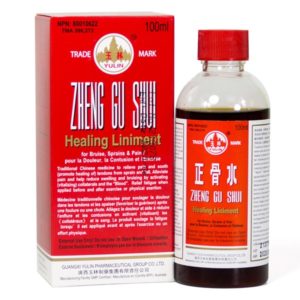 Zheng Gu Shui – Yulin Brand
Zheng Gu Shui – Yulin Brand
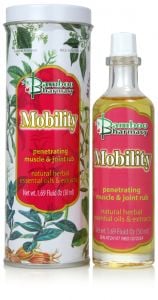 Mobility Muscle and Joint Rub (Ji Rou Guan Jie You) – by Bamboo Pharmacy
Mobility Muscle and Joint Rub (Ji Rou Guan Jie You) – by Bamboo Pharmacy